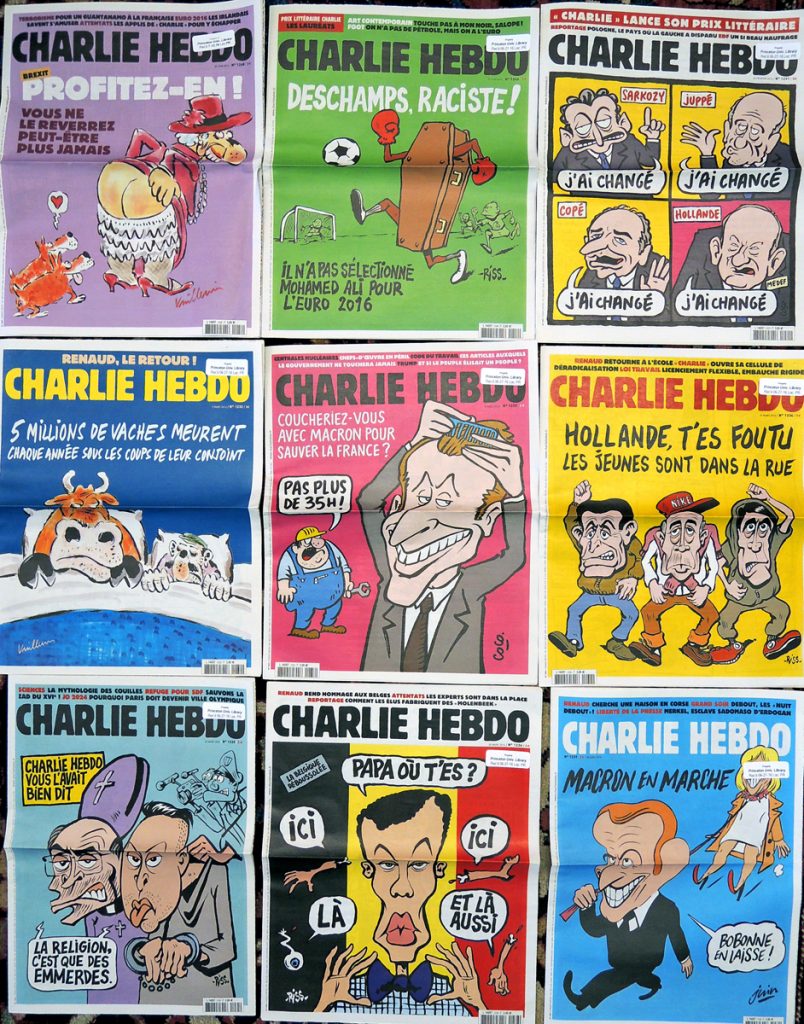 Shelved alphabetically on the 3rd floor of Firestone Library in the purple file folders.
Shelved alphabetically on the 3rd floor of Firestone Library in the purple file folders.
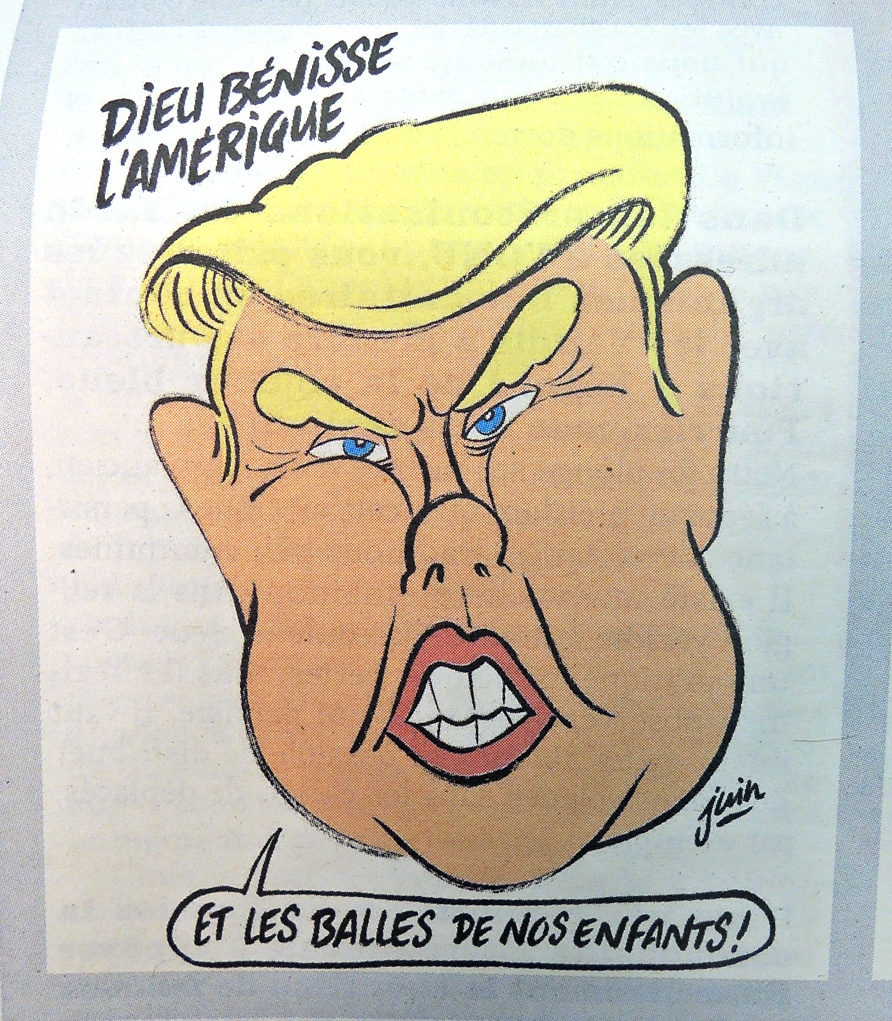 God bless America and the bullets of our children.
God bless America and the bullets of our children.

The Graphic Arts Collection only has a few bank certificates and bond notes in its collection of early American printed ephemera. Here are two examples.
Plymouth, Kankakee & Pacific Railroad Bond. New York: Henry Siebert & Bros; Ledger Building cor. Williams & Spruce Street, Issued 1871 (1874). Graphic Arts Collection GA 2016.00178. $1,000 railroad bond, uncancelled, payable in gold coin. 55 bond coupons attached.
District of Richmond [Bank certificate], Philadelphia, J.W. Steel, 1854. Certificate of a loan for $500 to Robert Allen or Beaver at 6%. With 77 certificates for $15 each payable half yearly. Graphic Arts Collection American broadsides
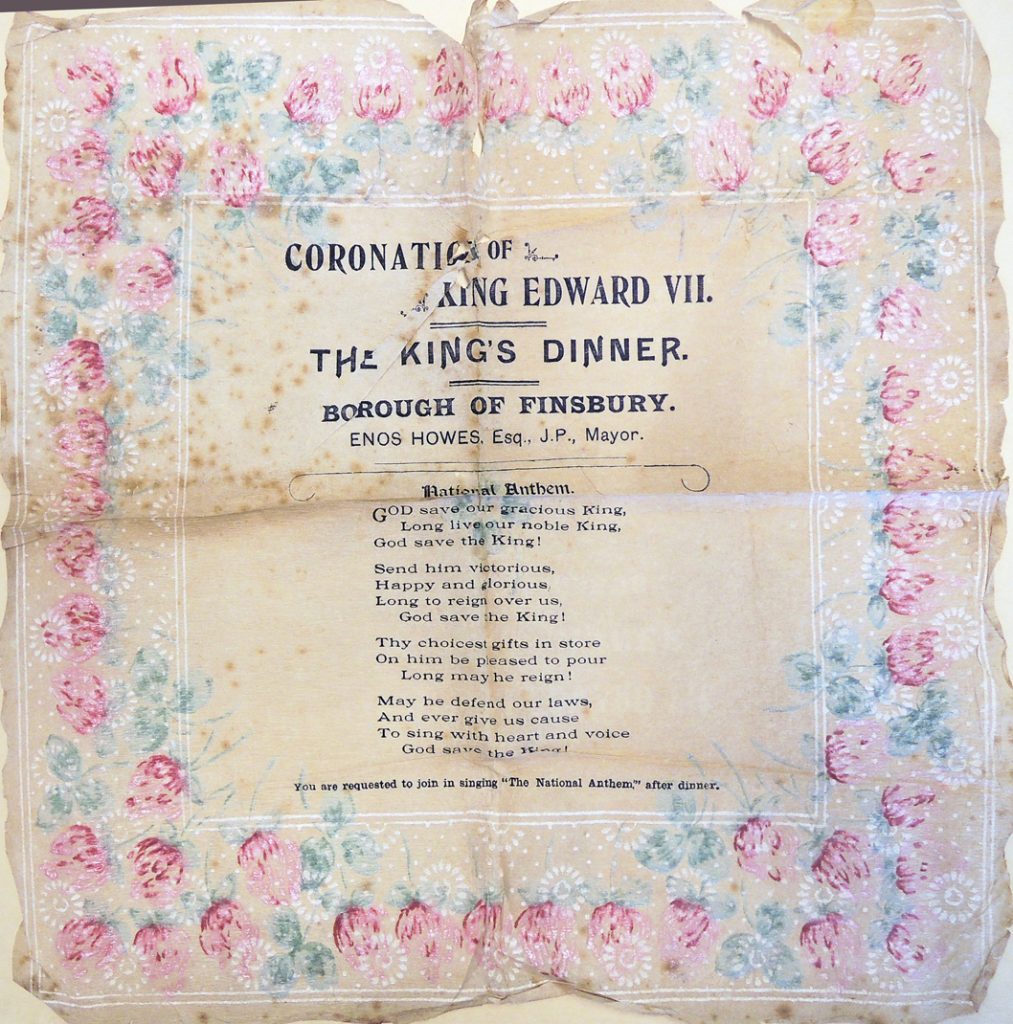 Thanks to the generous donation of Nancy Armstrong, the Graphic Arts Collection is the proud new owner of a souvenir serviette (paper napkin) from the coronation of King Edward VII, held August 9, 1902. Our collection holds a small number of similar British souvenirs, chiefly from the 1902 event. A few others are posted here: https://blogs.princeton.edu/graphicarts/2009/08/souvenir_serviettes.html
Thanks to the generous donation of Nancy Armstrong, the Graphic Arts Collection is the proud new owner of a souvenir serviette (paper napkin) from the coronation of King Edward VII, held August 9, 1902. Our collection holds a small number of similar British souvenirs, chiefly from the 1902 event. A few others are posted here: https://blogs.princeton.edu/graphicarts/2009/08/souvenir_serviettes.html
The napkin has a printed border of red, white and green with the words to the national anthem in the center square. “You are requested,” notes the printed text, “to join in singing ‘The National Anthem’ after dinner,” leading us to believe that this particular napkin was handed out free of charge to attendees of the coronation dinner rather than sold by street hawkers at the price of one penny. According to Michael Twyman, the printing was done by a few London firms who specialized in this genre, including S. Burgess of the Strand and Mathews of Hoxton (this sheet gives no indication of its printer). Thanks to Ms. Armstrong for her contribution to our collection.
Thanks to the generous gift of William Drenttel, Class of 1976 (1953-2013) the Graphic Arts Collection has a small collection of decorative and handwritten menus. Here is a small sample.
Drenttel was a designer, author, publisher, and president of Winterhouse Institute. He was also editorial director of Design Observer, a website covering design, social innovation, urbanism and visual culture.
The July 9, 2014 Princeton Alumni Weekly notes, “Bill came to Princeton from Tustin High School in California, where he starred on the debate team. Bill devised his own academic program, graduating in 1977 with an independent concentration in European cultural studies. Bill reported for The Daily Princetonian, managed the Student Bartending Agency, and joined Ivy Club. After graduation, Bill joined Compton Advertising, where he managed more than 20 Procter & Gamble brands. He left as senior vice president in 1985 to start the design company Drenttel Doyle Partners. In the 1990s, Bill met and married Jessica Helfand, and they operated Winterhouse in Connecticut while raising their two children.
Theorist and publisher William Drenttel is recognized for advancing critical thinking about design; for his long-standing commitment to integrating design strategy into organizations; for expanding design’s role in social innovation; and for his work as cofounder, editor and publisher of Design Observer.
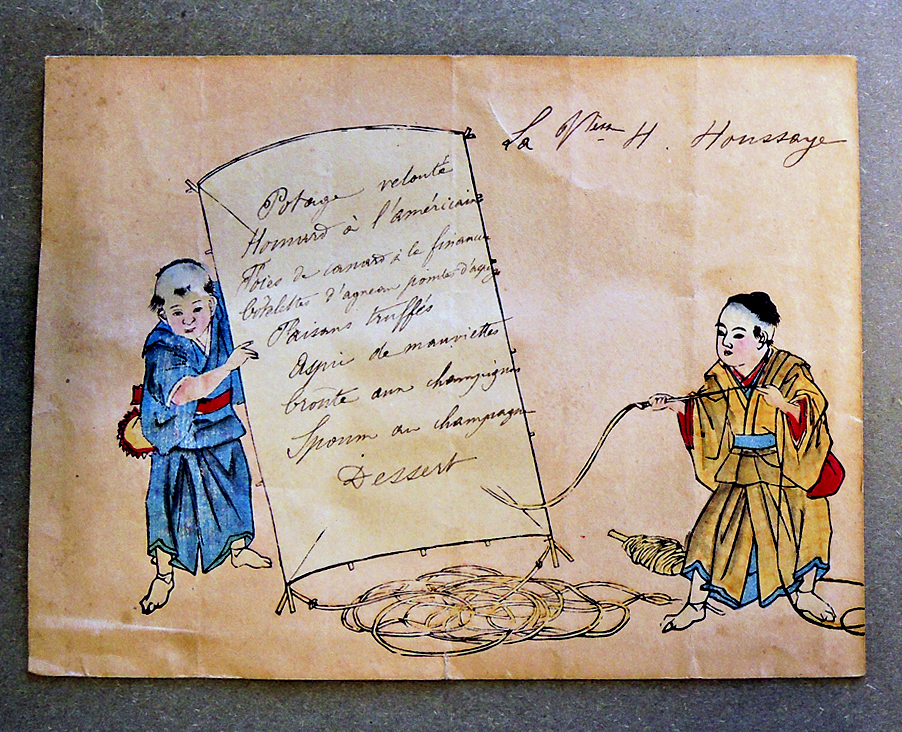
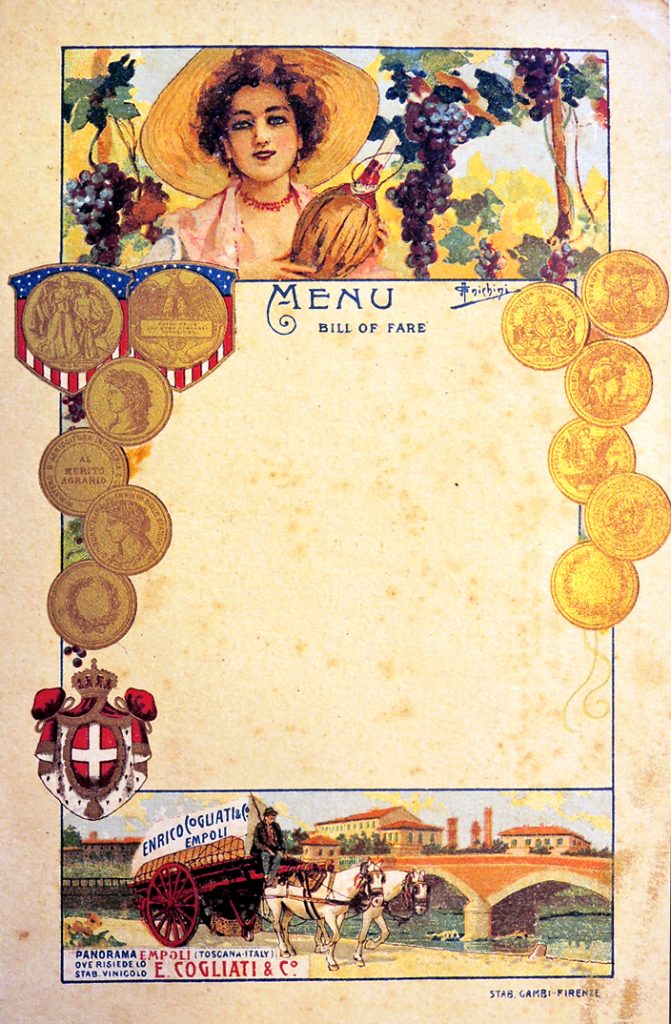
William Drenttel collection of menus, 1650-1981. Gift of William Drenttel (1953-2013). Graphic Arts Collection GC013. Sizes in inches.
1. Handwritten & color lithograph for Joseph Pelmain. French, no date. 6 x 4.5
2. Hand-colored and written menu with image of two Chinese figures holding kite (on which menu items are written), no date. 5 x 7
3. Menu for dinner by Société des Anciens Elèves des Ecoles Nationales d’Arts et Métiers, no date. One-color lithograph. 8.25 x 5.5
4. Menu for “Volontaires 1870-71” dinner at Maison Bovalet, France, no date. 10 x 6.5
5. Menu for dinner at “La Lanterne.” Paris, 1881. One-color lithograph. 9 x 5.5
6. Printed menu with ornamental border for Exposition Universelle, 1889. Brown and blue ink. 8.25 x 5.25
7. Representative’s card for Chocolat Frey, supplier of cocoa, (1891?). Lithographed in black & gold. 5.5 x 3.5
8. Color-lithographed and handwritten menu. French, 1893. Printed in yellow, red, green, light blue; shows two Japanese figures. 5.75 x 4.25
9. Menu for “Match International de l’Olympique” dinner at Grand-Hotel. France, 1896. Printed, blue type, with red/black Olimpique crest at top left. Gilt edges. 6.5 x 4.5
10. Menu, color lithograph and hand-written, for St. Edine (Etine?). French, 1896. 6.75 x 4.5
11. Printed color litho (blue/brown split fount, plus red type) menu for Centieme Anniversaire Du Diner de Lalsace, 1897. 9.25 x 6.75
12. Two-sided, printed menu for dinner by Association Tulousaine de Paris, 1897. 11 x 7.5
13. Menu for ocean-liner. French, 1900. Color litho; menu blank imprint: Messageries Maritimes. 9 x 6.
14. Printed menu for Restaurant Maire. Paris, 1902. Die cut, with ornamental design at top in raised silver ink; type in dark blue ink. 7.5 x 3.75
15. Printed menu for Société Archéologique dinner. Paris, 1909. With reproduced title-page engraving. 6.75 x 9
16. Printed menu. French, 1912. Card die-cut to suggest scroll forms. 7 x 4.25
17. Printed menu for Société Archéologique dinner. Paris, 1912. With reproduced engravings of Quarter de L’Opéra area of city. 11 x 8.75
18. Printed menu for Société Archéologique dinner. Paris, 1913. With reproduction of ornamental border, human figures, and center scroll formed out of handwriting model-book penstrokes. Inscribed at bottom: Daprés un Modéle d’Écriture de Coulon–coll. R. Havatte). 7.25 x 8
19. Menu for dinner at Cadou restaurant. Blois, France, 1920. Pale green with raised white ink ornamental border, and type printed in dark brown. 6.5 x 4
20. Menu for dinner at C. Jahan restaurant. Blois, France, 1920. Raised gold ink ornamental border, and type printed in black. 6.75 x 3
21. Printed menu for Société Archéologique, Historique & Artistique dinner. Paris, 1926. With reproduced engraving. 11 x 7.75
22. Printed menu for dinner of Le Coronet, Société Artistique et Litteraire, held at Maison de Centraux. Paris, 1931. Menu on front and lithograph on back. 15 x 11, folded
23. Menu for (Gameoli restaurant?). French, 1936. Handwritten onto menu blank. 8 x 3.5
24. Menu for dinner by the Académie des Psychologues du Gout, at Restaurant Tong Yen. Paris, 1963. Four-page booklet, with tipped-in color litho on front cover. 9.75 x 7
Italian Language:
25. Blank menu with color lithos of Tuscany, printed by Enrico Cogliati & Co. (wine merchants), no date. 8 x 5.25
26. Blank menu (color litho. printed by Dott. Botto Micca (liquor distributor?), Italy, no date. 13.5 x 7.0
27. Drawing for plate design, partially watercolored, no date. 9 x 12
28. Menu for Delbinari restaurant. Milan, no date. Six-page folded booklet, printed in brown and grey. 9.25 x 6.75
29. Menu for “La Mora” restaurant. Lucca, Italy, no date. Four-page folded booklet. 8 x 5.75
30. Receipt/bill-of-trade for wine 1649/50 vintage. Printed red ink on laid linen paper, with markings in pen. 4.5 x 6.25
31. Handwritten Italian menu, 1881. 12 x 8.5
32. Booklet of dinner menu with program (with booklet cover) for Musica della Legione Allieve Carabinieri, Rome, 1911. Booklet size 5.75 x 3.5
33. Menu for dinner (at Fert restaurant?), Rome, 1911. Litho, type in brown, crest at upper left in red, brown, gold, silver. 6 x 4
34. Menu for dinner at Villa Savoia, Italy, 1933. Blue ink on pale blue/green backdrop, with crest at top in raised white ink, and border in silver. 7 x 4.5
35. Menu for dinner at Villa d’Este, Italy, 1981. Four-page folded booklet, color litho on front. 7.75 x 6.25
English Language:
36. Menu blank with edges die cut, beveled, and gold-leafed, no date. 6.75 x 4.25
37. Menu for dinner by “S.S. Sado Maru.” 1910. Color litho of reeds and flying fish with printed type. 7.75 x 9.75
The Graphic Arts Collection along with Slavic, East European, and Eurasian Collections recently acquired a large group of illustrated Russian sheet music from the 1920s and 1930s for the Princeton University Library. We are in the process of transcribing, translating, and conserving the material but until that is finished, here is a taste of the wonderful lithographic covers. Don’t miss Douglas Fairbanks and Mary Pickford below.
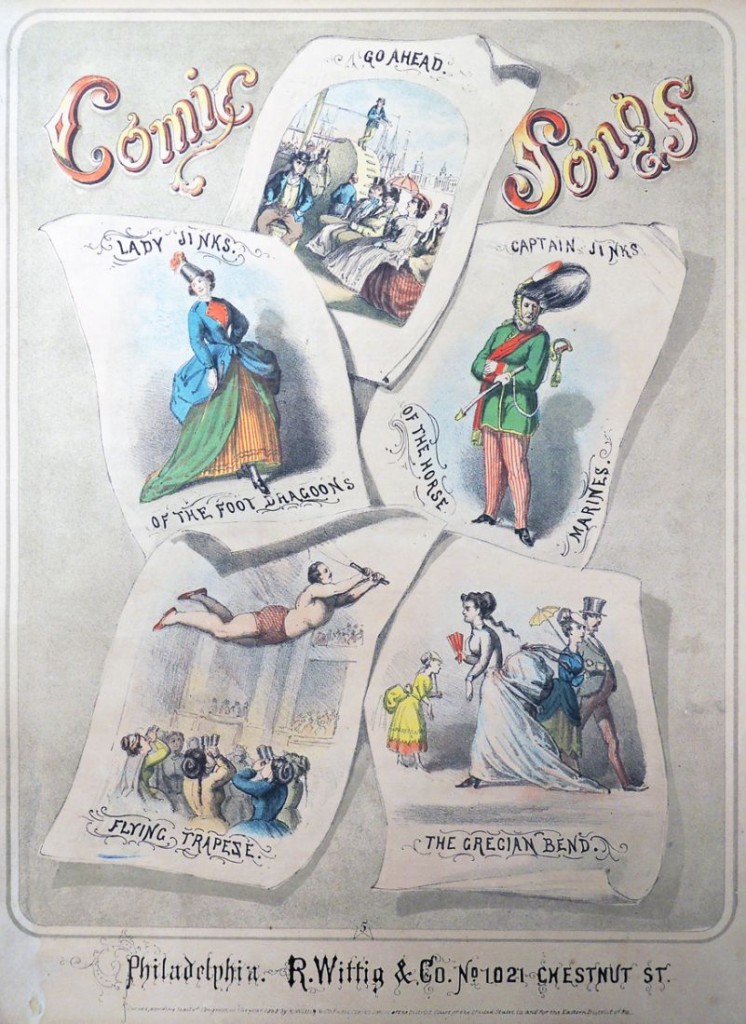 The Flying Trapeze was written by George Leybourne, arranged by Alfred Lee, and published by R. Wittig & Co., No. 1021 Chestnut St., Philadelphia, Pennsylvania in 1868.
The Flying Trapeze was written by George Leybourne, arranged by Alfred Lee, and published by R. Wittig & Co., No. 1021 Chestnut St., Philadelphia, Pennsylvania in 1868.
The collection of comic songs in the Graphic Arts Collection was lithographed by Louis N. Rosenthal (born about 1824), one of four Rosenthal brothers who operated a lithography firm on Walnut Street. Born in Poland, Louis arrived in Philadelphia in 1848 and within only a few years, managed one of the first shops in the city producing lithographs for advertising, maps, magazine, books, and sheet music. The family’s youngest brother Max was their primary artist.
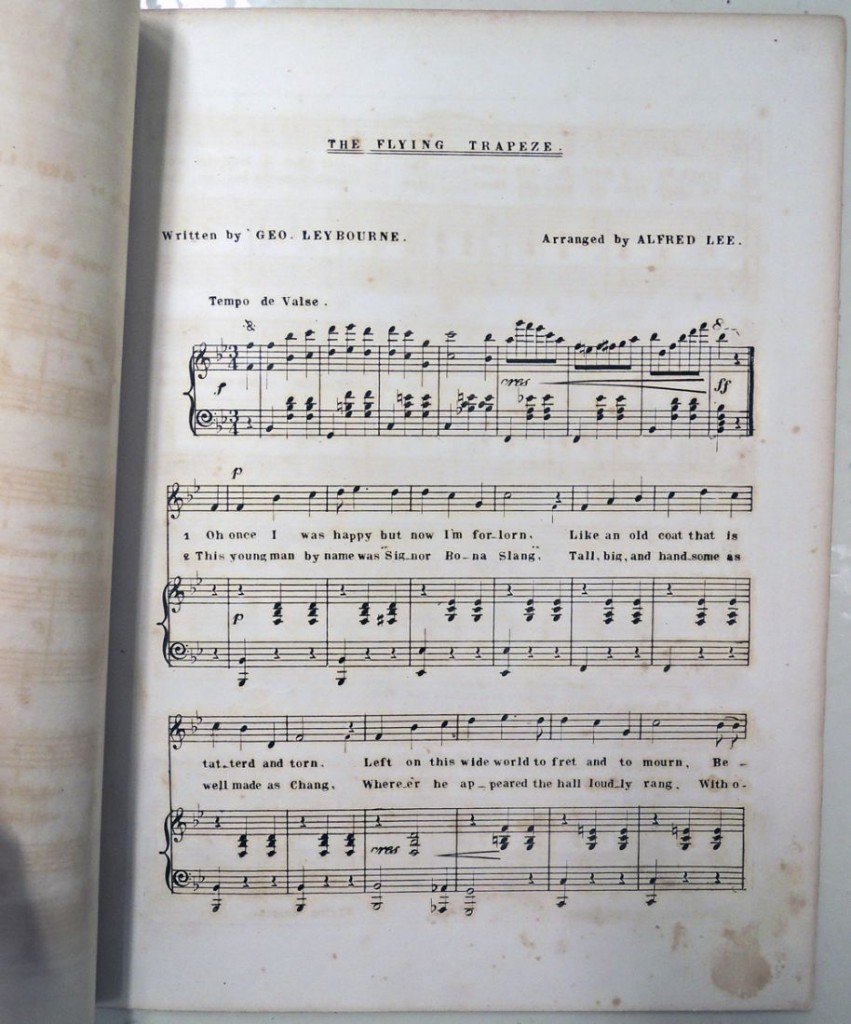
Once I was happy, but now I’m forlorn,
Like an old coat, all tattered and torn,
Left in this wide world to fret and to mourn,
Betrayed by a wife in her teens.
Oh, the girl that I loved she was handsome,
I tried all I knew her to please,
But I could not please one quarter as well
As the man on the flying trapeze.
Chorus
She floats through the air
With the greatest of ease,
You’d think her a man
On the flying trapeze.
She does all the work
While he takes his ease,
And that’s what became of my love.
Also including Louis Rosenthal’s lithographs:
Henry Louis Stephens (1824-1882), The Comic Natural History of the Human Race (Philadelphia: S. Robinson [1851]) Graphic Arts Collection (GAX) Oversize Hamilton 1213q
Charles Wilkins Webber (1819-1856) The Hunter-Naturalist (Philadelphia: J.W. Bradley, …, 1851). Graphic Arts Collection (GAX) Oversize Hamilton 466(1)q
Report of the Committee appointed by the Philomathean Society of the University of Pennsylvania to translate the inscription on the Rosetta stone ([Philadelphia: s.n., 1859]). Graphic Arts Collection (GAX) 2006-2063N and 2006-2064N
Charles Wilkins Webber (1819-1856), Wild Scenes and Wild Hunters of the World (Philadelphia, Bradley, 1852). Graphic Arts Collection (GAX) Hamilton 466(2)
 Centennial International Exhibition [Handkerchief], ca. 1876. Wood engraving, roller printed on cotton cloth. Manufactured by A. & C. Cramer in Düsseldorf. Graphic Arts Collection
Centennial International Exhibition [Handkerchief], ca. 1876. Wood engraving, roller printed on cotton cloth. Manufactured by A. & C. Cramer in Düsseldorf. Graphic Arts Collection
Many souvenirs were produced for the 1876 Centennial Exhibition at Fairmount Park in Philadelphia. According to the Library Company’s excellent summary, “the Centennial Exhibition took place on more than 285 acres of land in Philadelphia’s Fairmount Park May 10-November 10, 1876. Close to ten million visitors (9,910,966) went to the fair via railroad, steamboat, carriage, and on foot. Thirty-seven nations participated in the event, officially named the International Exhibition of Arts, Manufactures, and Products of the Soil and Mine.” http://www.lcpimages.org/centennial/
One commemorative item was a wood engraved cloth or handkerchief manufactured by A. & C. Cramer in Düsseldorf, Germany. The cloth is inscribed E Pluribus Unum and Centennial International at the top and Exhibition, Fairmount Park, Philadelphia, 1776 1876, Memorial Hall Art Gallery at the bottom. Four buildings are depicted, including the main exhibition building, the machinery hall, the agricultural hall and the horticultural hall.
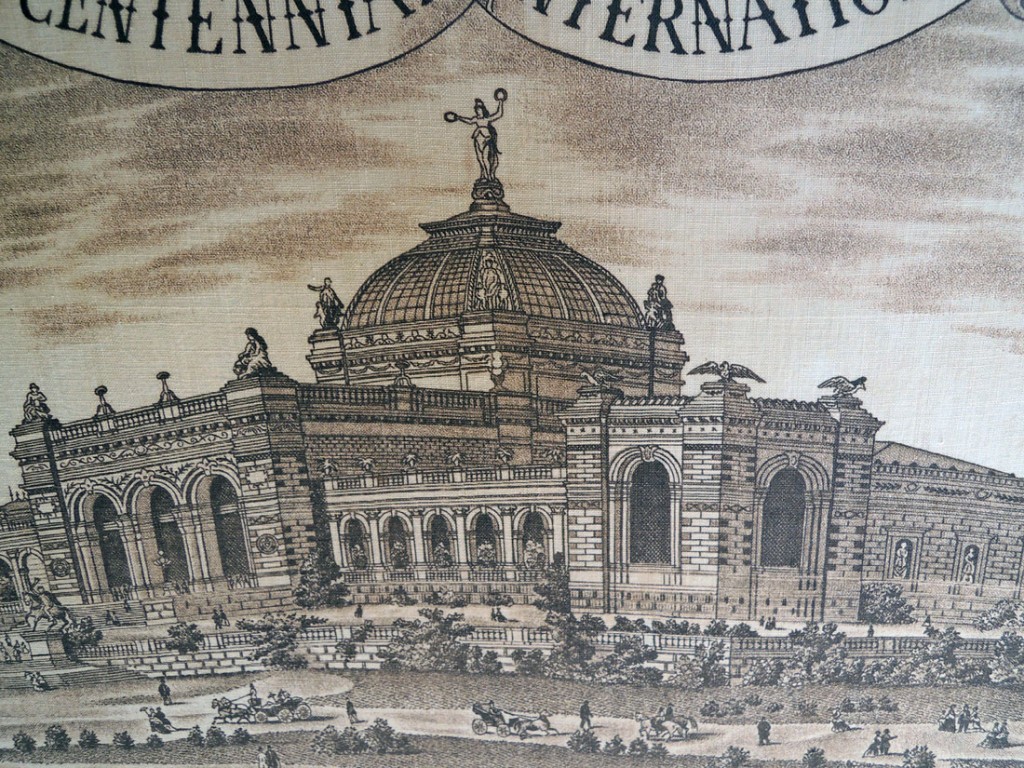 The image is “roller printed,” meaning it was produced by a machine rather than hand printed individually. Given the thousands that were produced, this is to be expected. Even so, the detail is surprisingly good and Princeton University Library is among many who collected and framed the cotton cloth to preserve it.
The image is “roller printed,” meaning it was produced by a machine rather than hand printed individually. Given the thousands that were produced, this is to be expected. Even so, the detail is surprisingly good and Princeton University Library is among many who collected and framed the cotton cloth to preserve it.
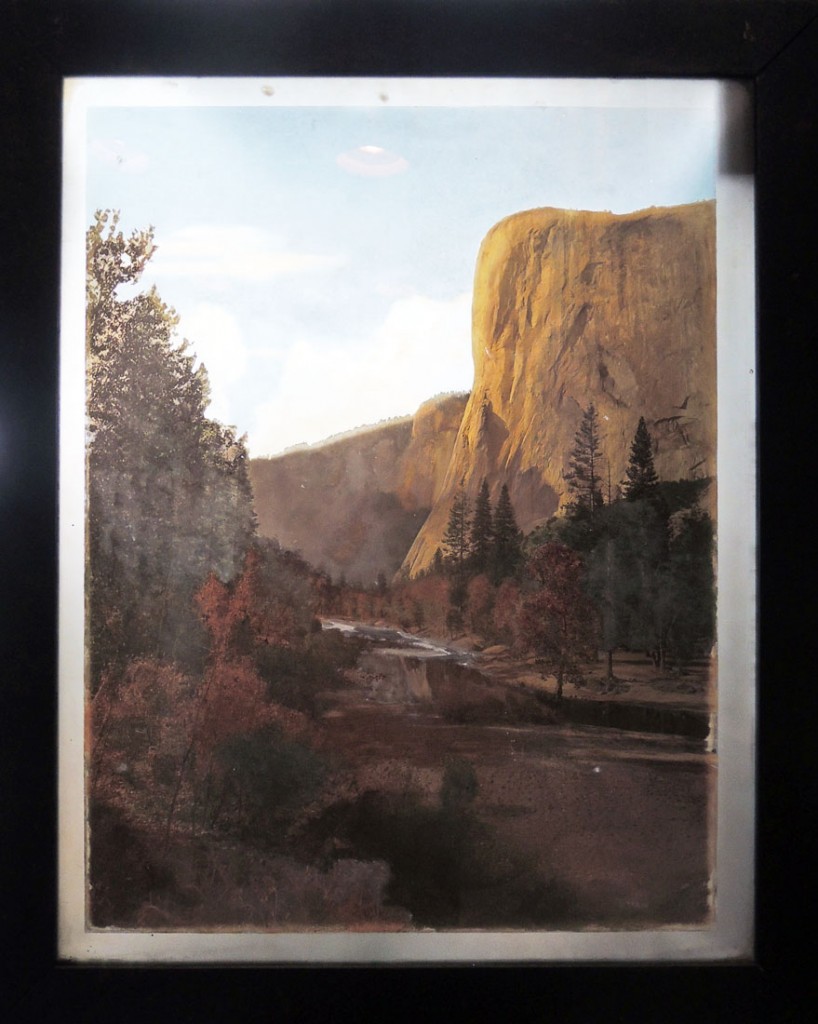 Artist unidentified, El Capitan, ca. 1870. Frame: 81 x 66.5 cm. Graphic Arts Collection
Artist unidentified, El Capitan, ca. 1870. Frame: 81 x 66.5 cm. Graphic Arts Collection
This reverse painting on glass features an albumen silver print as the basis for the nineteenth-century landscape. Also called verre églomisé, after Jean-Baptiste Glomy (1711-1886), reverse painting has been practiced since the Middle Ages. Conservators and curators at the Winterthur Museum posted an excellent description at http://www.winterthur.org/pdfs/winterthur_primer_glass.pdf.
Often in the seventeenth and eighteenth centuries, an engraving would be used to establish the outline or basic design of the painting. When photography became viable in the nineteenth century, portraits in particular were painted over low resolution photographic prints.
While the exact photograph under our painting has not been identified, it could be one of the mammoth prints made by Carleton Watkins (1829–1916). He photographed Yosemite Valley a number of times during the 1860s, while working for the California State Geological Survey. Many of these were reprinted over the years in a variety of sizes and formats.
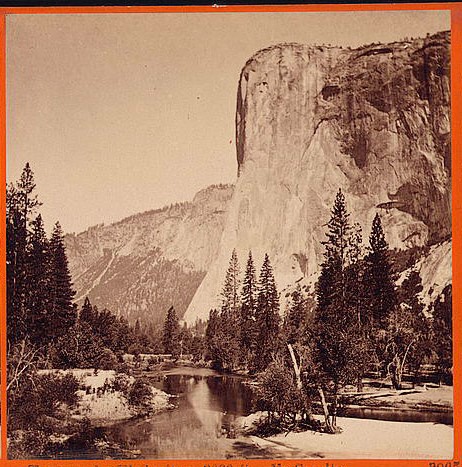 Carleton Watkins (1829-1916), Tutocanula, or El Capitan, 3600 feet, no date.
Carleton Watkins (1829-1916), Tutocanula, or El Capitan, 3600 feet, no date.
When examining the reverse painting closely, you can see the photograph has been torn around the edge of the trees and mountains, leaving a clear area to paint the sky. The highlights, usually done last when painting on canvas, must be laid down first on glass in order for them to be seen when the glass pane is turned around.
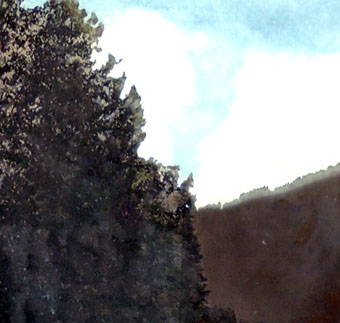
Bourne Hall Draper (1775-1843), Scientific Conversation Cards (London?, no date]. 53 pink cards printed in letterpress housed within the original ribbed pink and green paper slip case. Graphic Arts Collection GAX 2016- in process.
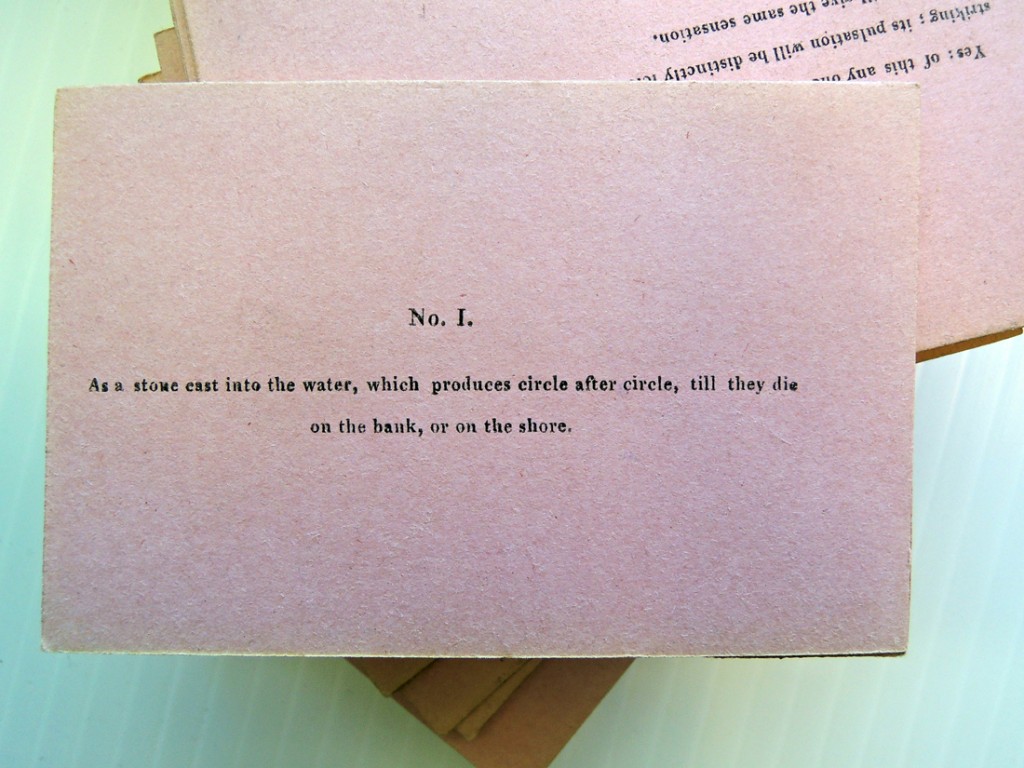
Dealer’s note: “A scarce educational card game, intended not only to impart information, ‘but [so] that persons may be induced to think for themselves’. Listed in the 1834 issue of the Monthly Literary Advertiser, and the 1835 January-April issue of the Metropolitan magazine, the game was the brain child of Reverend B. H. Draper.”
“According to the rules, the cards were to be distributed ‘in equal proportions to the company. Then let a question be read; and, when all have given their thoughts on it, let the card answering to the number of the question be produced and read’”
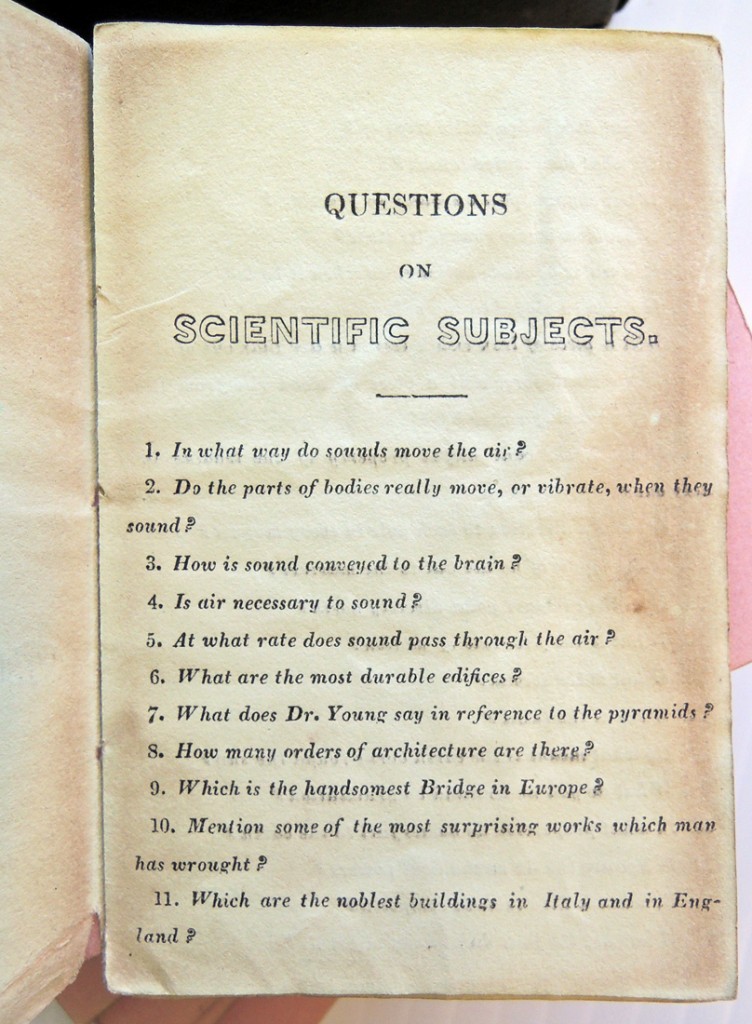
An ordained Baptist minister, Bourne Hall Draper was the author of a number of books for children including The Juvenile Naturalist (1839), Bible Illustrations (1831) and The Youths’ Instructer (Philadelphia: American Sunday School Union, 1830). Graphic Arts Collection (GAX) Hamilton 1674(b)
A search of the collection uncovers several other sets of conversation cards, suggesting that Draper was not the inventor of the game. Geographical conversation (London: John Wallis, 1799. (CTSN) 7186278); Instructive conversation cards (London: W. Darton, 1813. (CTSN) Cards 23152); and Conversation cards or pleasing pastimes ([England. ca. 1815?]. (CTSN) Cards 17027).
The first page of the Princeton Print Club scrapbook, now available online at http://arks.princeton.edu/ark:/88435/td96k526s, holds a small card that reads “Friends of the Princeton Library invite your presence at the opening of the house Forty Mercer Street Thursday, October seventeen, 1940 from four to six, R.S.V.P.”
The letterpress text is neatly set inside a decorative cartouche copied from a type specimen catalogue of Binny and Ronaldson owned by Elmer Adler (1884-1962). Around it on the page are placed no less than six articles announcing the opening of Alder’s printing library at Princeton along with a program of instruction in the graphic arts.
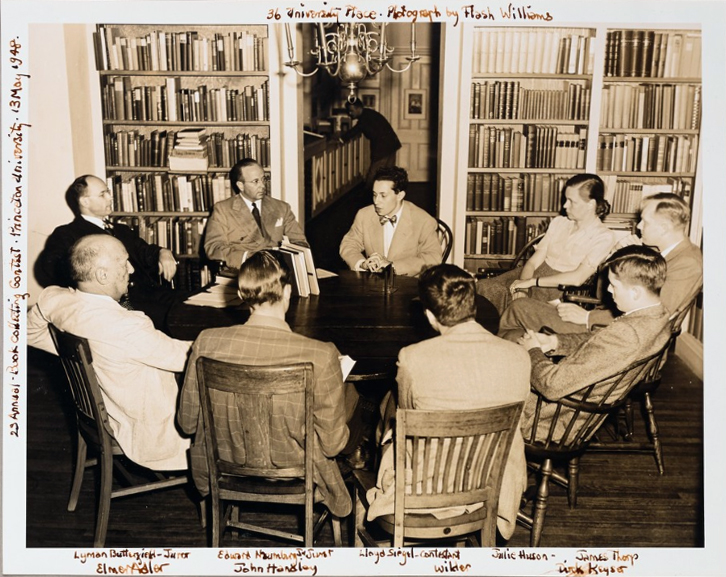
Writing in the Princeton Alumni Weekly, John F. Peckham, Class of 1940, noted that Princeton was not alone in recognizing a need for such a program. In 1938, the newly appointed librarian of Harvard University’s library, William Jackson (1905-1964), asked Philip Hofer (1998-1984) to head the Department of Printing and Graphic Arts, the first such department in the country. That same year, Massachusetts Institute of Technology established the Dard Hunter Paper Museum and hired Hunter (1883-1966) as its curator.
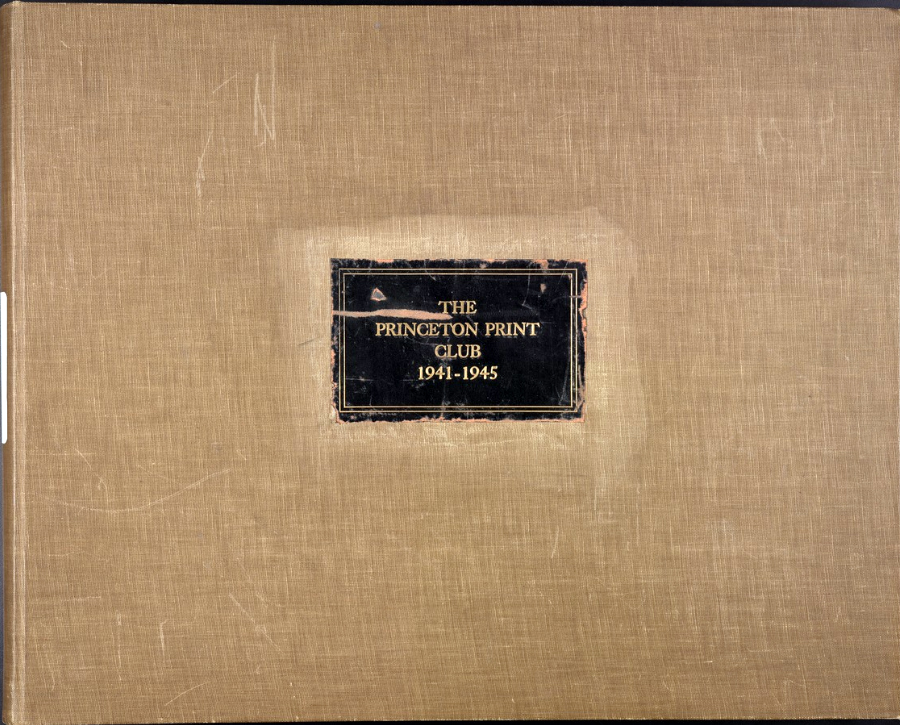
Adler’s earliest Princeton supporters and collaborators in this venture were Lawrance Thompson (1906-1973), professor of English and American Literature, and curator of the Library’s Treasure Room, along with Francis Adams Comstock, Class of 1919 (1897-1981) professor of architecture and a talented visual artist. Thompson introduced Adler to the other Friends of the Princeton University Library (FPUL) in a long piece for the Princeton University Library Chronicle, published in November 1940. “Those of us who have admired the adventurous spirit with which Mr. Adler has embarked on a variety of uncharted seas, in the past, feel confident that his voyage to Princeton is the beginning of another equally successful saga.”
Thanks to Robert Cresswell, Class of 1919, chairman of the FPUL, and a grant from the Carnegie Foundation, Adler was invited to Princeton for a period of three years with the understanding that the total cost of the program, budgeted at $18,000, would be covered by the FPUL, while the “University would not bear any of the responsibility for financing or continuance of the program; and while Mr. Adler would be attached to the staff of the library as research associate in the graphic arts, he would not be given faculty rank and students taking his courses would not be given curriculum credit.”
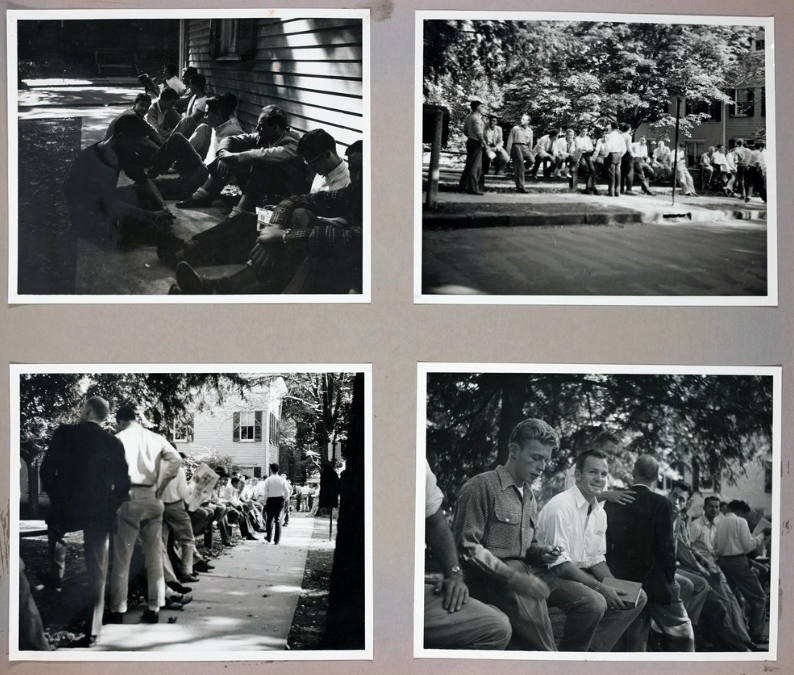
Once the contract was signed, an early suggestion was to locate Adler in one of the eating clubs along Prospect Avenue. Lawrence approached the Cottage Club in 1939 but wrote Adler of his disappointment when, “They voted against the housing of the collection in the library . . . [since] the library room and particularly the room beyond was needed for football weekends when the house overflows with luncheon and cocktail guests.”
Another plot would have placed the collection in the damp basement of 20 Nassau Street, with Adler residing at the Nassau Club. It was only after Adler had “worn to a frazzle several real-estate agents, who showed him practically every available house to rent in Princeton, did he settle on the dignified, hundred year old and vacant Miller house at Forty Mercer Street.”
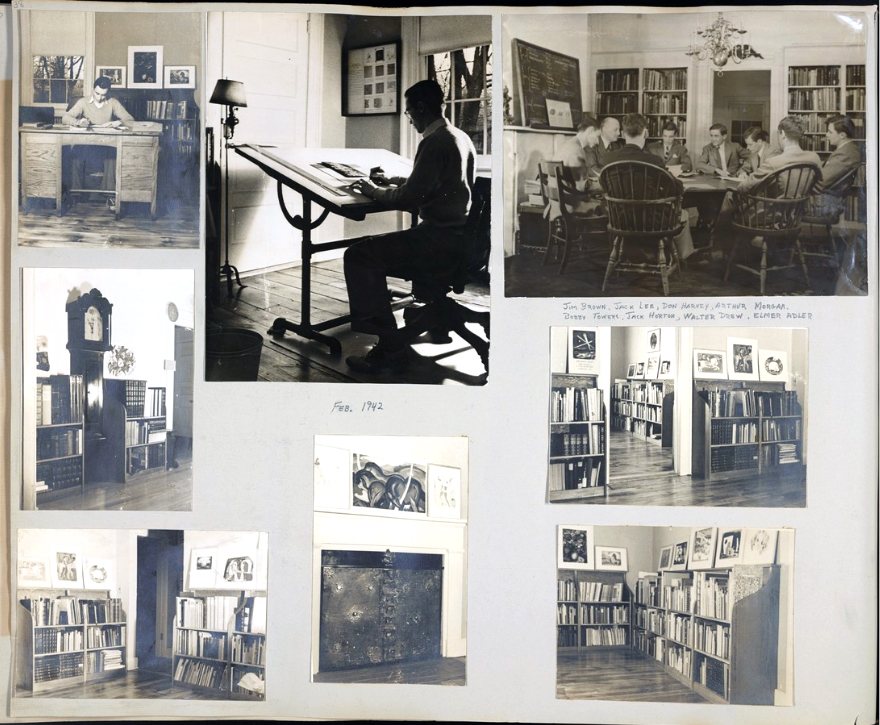
Within the first year of his tenure, Adler transformed the modest frame building on Mercer Street into a vibrant nucleus teeming with activities, displays, celebrated guests, and giveaways. Its most consuming project was The Princeton Print Club and 40 Mercer became known as its clubhouse. By the end of the 1940-1941 school year, the student’s monthly The Nassau Sovereign proclaimed Elmer Adler “an amazing man and his brilliant house—each a new nerve center of campus activity.”

With the fall semester quickly approaching, Adler swung into action and had University carpenters, painters, electricians, plumbers, and others renovate the building into a series of small meeting rooms and galleries, along with an apartment where he would live during the week. The three floors included a working print shop, a library, an exhibition gallery, print room, and in the basement, a smoking room where the anti-smoking, anti-drinking Adler rarely appeared.
By October, the doors on Mercer Street opened with a selection of Adler’s personal collection of prints and printed books on view. “Faculty members, students, and Princeton residents yesterday turned out for the first formal showing of a collection of over 8,000 books and 4,000 prints belonging to Elmer Adler, a research associate on the staff of the University Library,” announced the Daily Princetonian.
“The collection which will provide the basis for informal courses on various aspects of the graphic arts is located at 40 Mercer St. and is open to the public. . . Individuals wishing to use the collection for study and research should obtain admission cards from Lawrance Thompson in the University Library Treasure Room. However, those interested in the collection as an exhibit may take advantage of the open invitations, which will be arranged serially by the Friends of the Princeton Library.”
To learn more about the Princeton Print Club, visit the digital scrapbook at: http://arks.princeton.edu/ark:/88435/td96k526s.
Although the book is inscribed: “Delivered August 14, 1947. Pasting through September 14, 1947 by Wm. G. McLaughlin Jr [Club President],” someone has added several more pages, including information on the new graphic arts curator Gillett Griffin in 1953.
See also: https://graphicarts.princeton.edu/2014/05/27/photography-and-the-princeton-print-club/